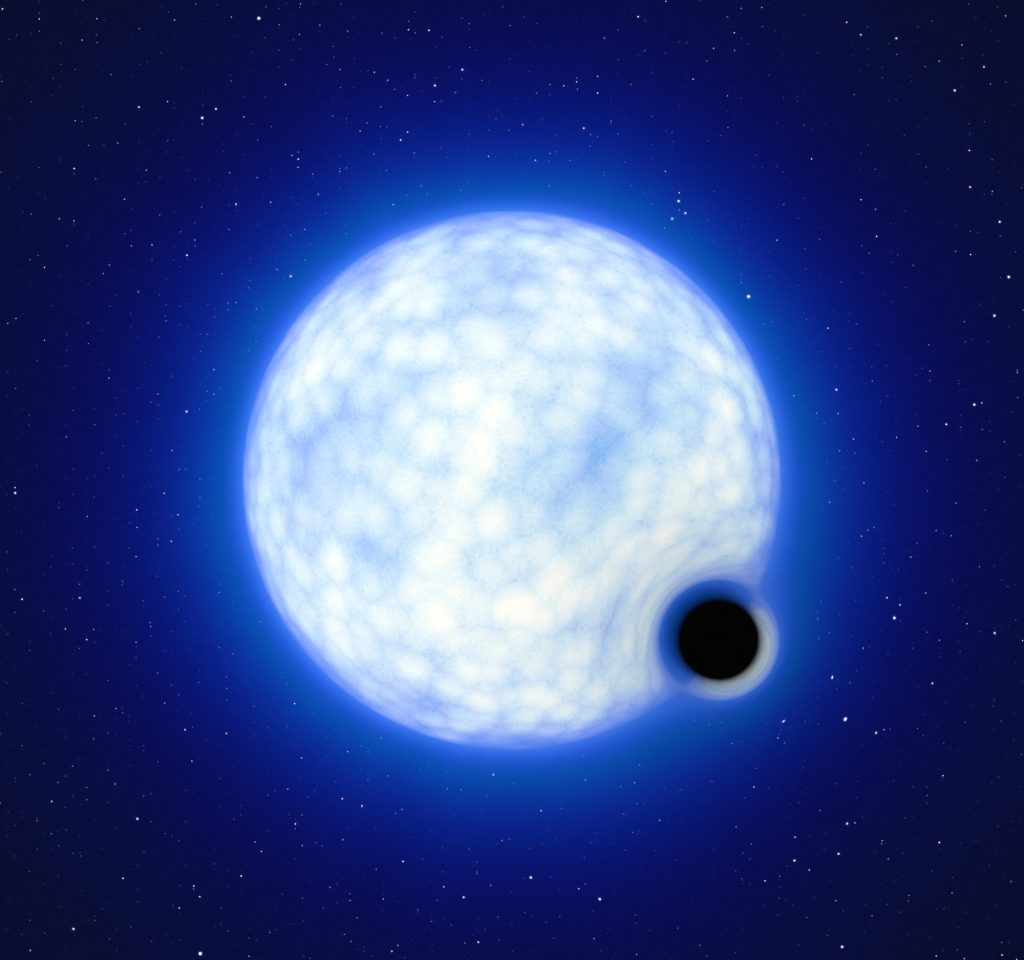Like a needle in a haystack. After six years of observation at the European Southern Observatory (ESO), a team of international experts revealed The first stellar-mass dormant black hole, orbiting a star in the Magellanic Cloud, a dwarf galaxy near the Milky Way. This new type of black hole, which is difficult to observe, confirms a long-term prediction in theory.
Black holes are difficult to detect because they do not emit any light. These massive stars at the end of their trajectory, collapsing in on themselves under their own gravity, have such a high density and gravitational force that light cannot escape. They are only betrayed by the large amounts of radiation emitted when they swallow the material around them.
Some are more secretive than others: latent black holes. when they sleep They interact very little with their environment and emit almost no electromagnetic wavesAnd thus pass under the radar tools of astrophysicists. It’s something like that Just revealed by ESO in the VFTS 243 system in the Magellanic Cloud.
short-lived balance
To find it, this international team of astronomers, dubbed ESO’s “black hole police,” studied the Tarantula Nebula, a region where many stars form, using a spectrometer mounted on ESO’s Very Large Telescope. More than 1,000 massive stars have been sifted To find those who might have black holes as companions in a binary system where two stars orbit each other.
In the systems observed so far, a star that has become a black hole is close enough to its companion star to “steal” its matter, explained one of the study’s authors to AFP Hughes Sana of the University of Louvain in Belgium. This substance, once captured, emits x-rays, which can be detected.
On the contrary, the sleeping black hole discovered by the researchers does not emit anything, because A living star is far enough away to not be eaten. She stays now Balanced in this orbit for 14 daysThe astronomer explains. However, this equilibrium cannot continue because “a living star will grow, and at this time, the black hole will swallow part of its surface,” which will then emit X-rays, thereby exiting its rest state.
To confirm that the ghostly object is indeed a black hole, the researchers proceeded with removal, ruling out several scenarios such as the star losing its envelope. “The only reasonable explanation is that it is a black hole, because no other star can reproduce this observational data,” summarizes the researcher.
According to the latest models, about 2% of the massive stars in our galaxy likely have a black hole around them, or about 100 million. “Currently, we only know ten of them, they were all detected thanks to their X-ray emissions, so we are missing some of them!” , Hugues Sana explains.
New Keys to Understanding the Origin of Merging Black Holes
This first stellar black hole, with a mass ten times the mass of the Sun, is an important discovery because the scientific community has never discovered it while astronomers are convinced that it is widespread. Several candidates have submitted themselves in recent years but none of them have been validated yet.
This discovery opens new horizons about the processes accompanying the formation of black holes. In particular, experts question whether the collapse of the core of a dying massive star is followed by a supernova explosion.
“The star that formed the black hole in VFTS 243 appears to have collapsed completely, with no signs of a previous explosion,” says one of the study’s authors. “Evidence for this ‘direct collapse’ scenario has emerged recently, but our study arguably offers one of the most direct indications. This has huge implications for the origin of black hole mergers in the universe.”

“Music guru. Incurable web practitioner. Thinker. Lifelong zombie junkie. Tv buff. Typical organizer. Evil beer scholar.”






More Stories
A large manufacturing project awaits space in the industrial zone
According to science, here are officially the two most beautiful first names in the world
Green space, 100% pedestrianized: DIX30 reinvents itself